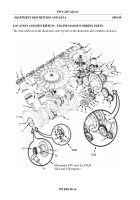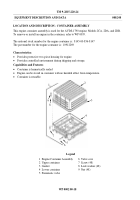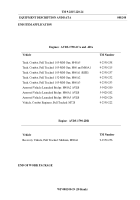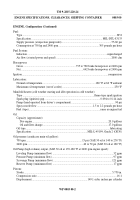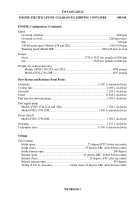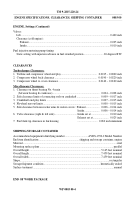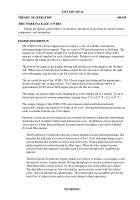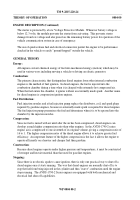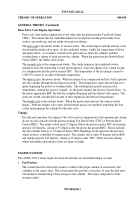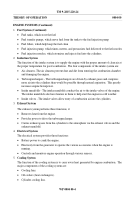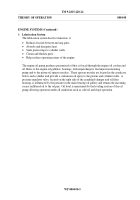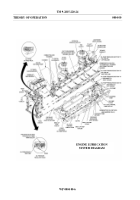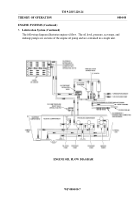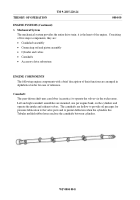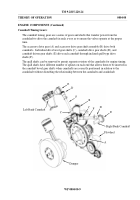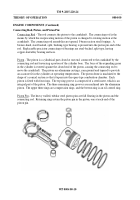TM-9-2815-220-24 - Page 63 of 1563
TM 9-2815-220-24
THEORY OF OPERATION
0004 00
THIS WORK PACKAGE COVERS:
WP 0004 00-1
Engine description, general theory of operation, and theory of operation for engine systems,
components, and transmitters
ENGINE DESCRIPTION
The AVDS-1790-2 Series engines are air-cooled, 4-cycle, 12-cylinder, fuel injected,
turbosupercharged diesel engines.
They are rated at 750 gross horsepower at 2400 rpm.
The
engines are of the 90-degree upright Vee configuration and have overhead valves with a
separate overhead camshaft for each cylinder bank.
Extensive use of aluminum components
throughout the engine provides for a high power-to-weight ratio.
The front of the engine is the damper housing end and the rear of the engine is the flywheel
end.
When viewed from the front looking towards the rear, the side to the right is the right
side of the engine, and the side to the left is the left side of the engine.
The air-cooled design of the AVDS-1790-2 Series engine has eliminated the maintenance
burden of liquid type cooling systems.
Two engine-driven fans producing airflow of
approximately 20,000 cfm at 2400 engine rpm provide this air cooling.
The engine can operate while totally submerged in water with the aid of a snorkel.
It can be
started and operated at extreme temperatures ranging from -25 to +125 °F (-32 to +52 °C).
The compact design of the AVDS-1790 series engine includes individual and easily
replaceable cylinders arranged in two banks of six each.
All scheduled maintenance items are
easily accessible from the top of the engine.
Electronic sensors protect the engine electrical system and internal components from damage
should electrical overload or lubrication deficiencies occur.
In addition to these operational
safety devices, a Dust Detector/Ejector System to protect the engine is provided on Model
2CA and 2DA engines.
The Dust Detector System incorporates a sensor mounted on each turbosupercharger that
monitors the induction air to detect the presence of dust.
Each turbosupercharger uses a
special housing that includes an orifice and a filter strip.
Engine induction air from the
intake manifold circulates through the filter strips.
When the filter strip(s) become
restricted from dust ingestion a pressure switch activates automatically, signaling the
operator.
The Dust Ejector System uses engine exhaust gas velocity to produce a scavenging action
through the system.
Engine exhaust flowing through ejector nozzles produces a pressure
differential which creates air flow for the scavenging action of the vehicle pre-cleaner.
The dust-laden scavenge air flows through the ejector nozzles, mixes with the exhaust
gases, and exits through the exhaust pipes.
The exhaust pipe cap assemblies prevent the
back-flow of exhaust gases and/or water entry during fording operations.
Back to Top


